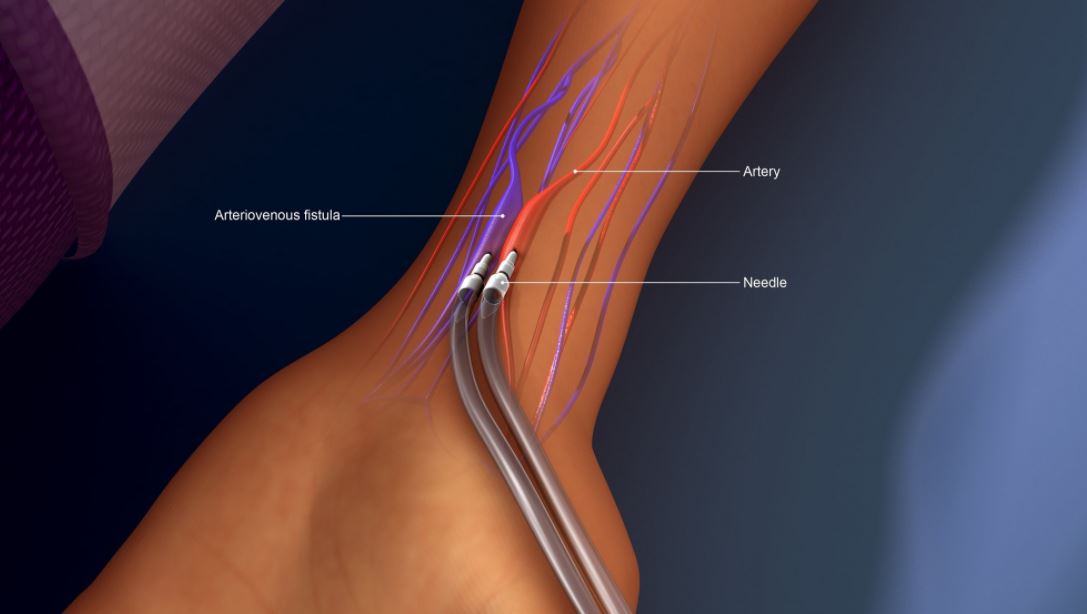
Arteriovenous fistula (AVF) is the preferred vascular approach because it presents less risk of infection. It is a surgical connection (anastomosis) of an artery to a vein.
Under higher blood pressure, the vein will dilate. This results in high blood flow in the vein, which will grow, become palpable and visible. A tremor will be perceived on palpation (thrill) and a breath on auscultation.
Before you can prick it, you have to wait one month to allow sufficient dilation of the vein. There is no such thing as zero risk! An AVF can bleed, shrink, swell, become blocked, and sometimes become infected. This is why it is vital to monitor your precious property daily, both at home and in the hospital.
Warning
Check the thrill, in case of doubt on palpation (weaker or absent thrill), pain, redness, or old poorly healed puncture points (redness, thick crusts) you should not do not hesitate to contact the hospital: at the dialysis service and, if applicable if the service is closed, at the nephrology care unit.
Your arm should be kept meticulously clean. When doing dirty work (DIY, gardening) or involving a risk of injury (beware of sharp objects), protect it with long sleeves and then clean with soap. Remember to moisturize from time to time with a cream.
be kept meticulously clean. When doing dirty work (DIY, gardening) or involving a risk of injury (beware of sharp objects), protect it with long sleeves and then clean with soap. Remember to moisturize from time to time with a cream.
Avoid prolonged exposure of your arm to the sun. Recommend rinsing with fresh water after each swim, as saltwater can cause itching, with a risk of lesions, scratching, and therefore infection. Prohibit the blood test and infusion in the AVF.
Refrain from carrying heavy loads on the side of the limb neither bracelet nor clothing too tight. Get used to not falling asleep on the arm and never taking blood pressure there.
After the session, keep the dressings until the next day. Sometimes the nurse makes a safety bandage for the return home. Remove it upon your arrival. If bleeding occurs, compress with sterile compresses. If this persists (beyond 15 minutes), contact the service.
The Dialysis Catheter
In some situations, it is not possible to create an AVF or in an emergency, if your AVF is causing a problem (for example becomes blocked), the placement of a catheter is necessary.
It is a tube inserted into a large vein (placed in the jugular vein and extending to the right atrium). This catheter is placed by a surgeon, under local anesthesia, and can remain in place for several months or several years.
As with the AFV, you must take certain precautions! At the end of the session, a sterile dressing protects your catheter: never remove it, do it again only in a medical environment, do not take a bath. If you want to take a shower, tell the nursing staff so that they can put on a waterproof bandage.
Always notify the service in the event of fever with chills, bleeding, pain in your catheter, detachment of your dressing, itching. Your catheter should not be used for blood sampling and infusions under any circumstances. Your vascular access is a precious asset that deserves your full attention. The quality and continuity of your dialysis depend on it.

